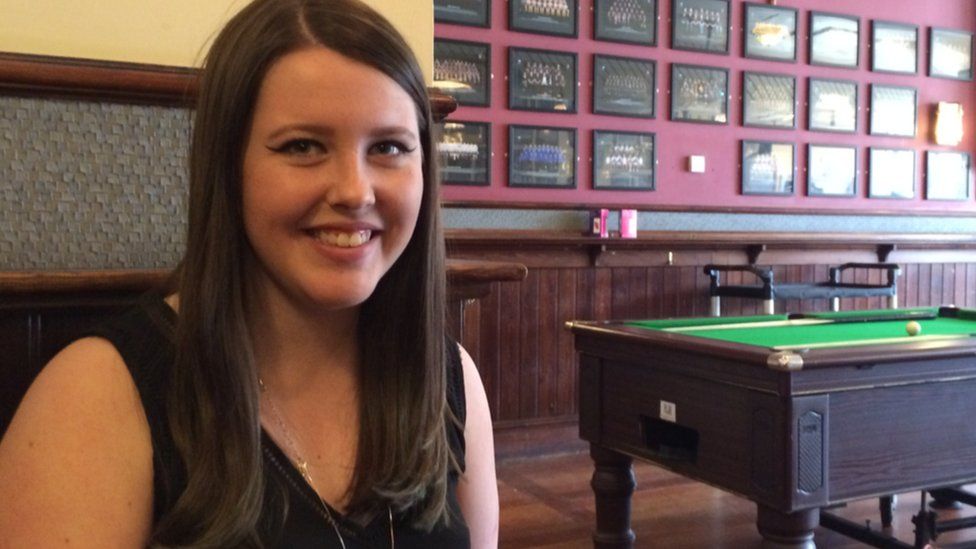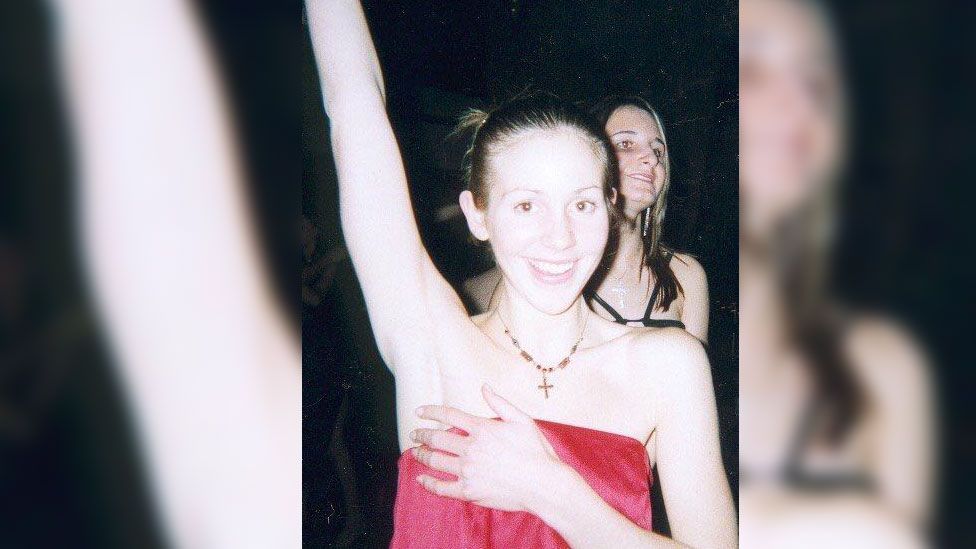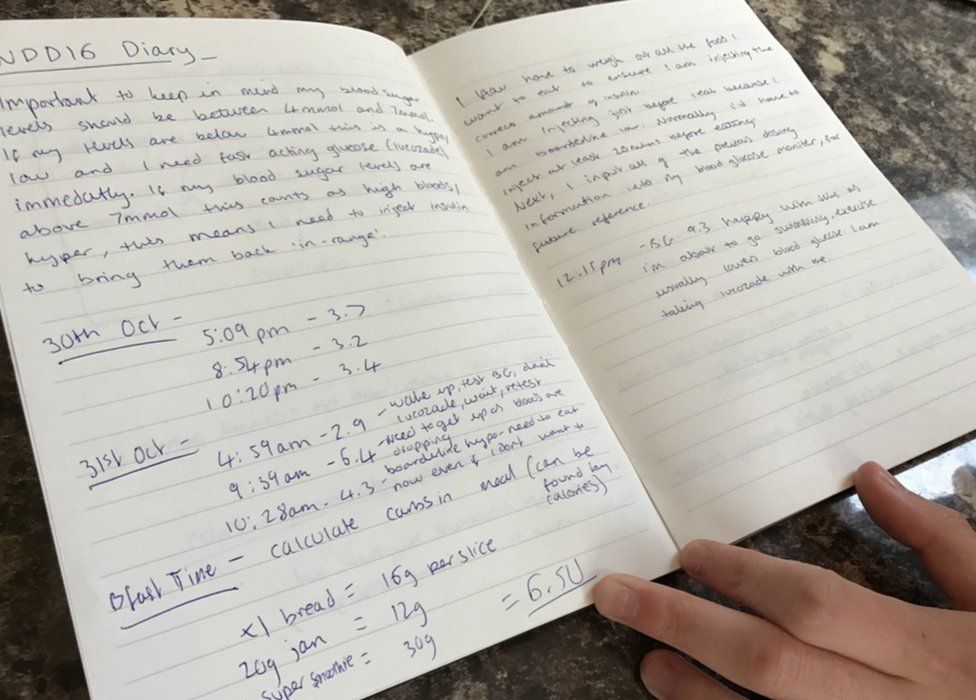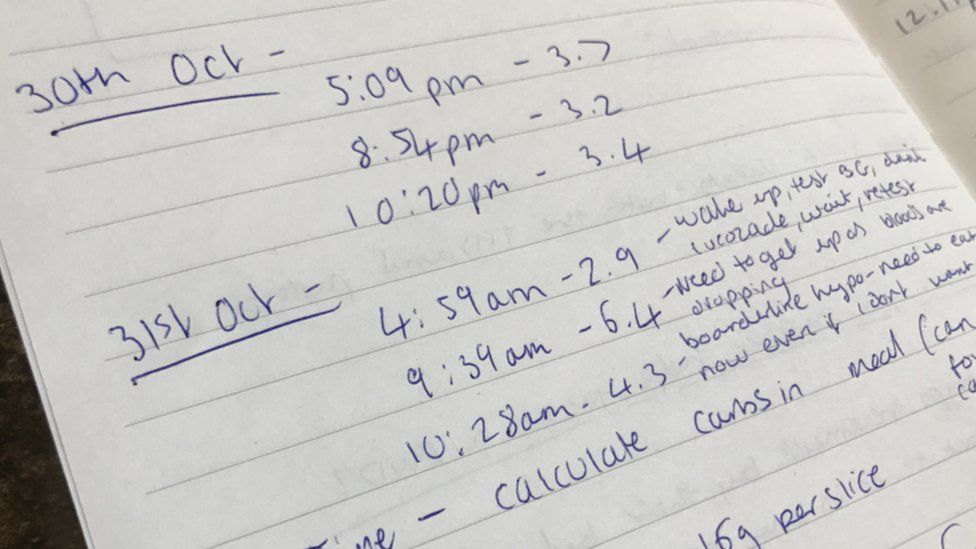Diabetes diary
Amber McGrath is 18 and for most of her life she’s lived with type 1 diabetes.
She’s one of about 35,000 under-19s in the UK with the condition, according to the charity Diabetes UK.
Type 1 diabetes, which is different to type 2 diabetes, is an autoimmune condition which means a person’s pancreas has stopped working.
There is no cure and Amber will spend the rest of her life monitoring her blood glucose level constantly as well as giving herself insulin injections.
BBC Advice has more help and information about diabetes.
More
related stories

When diabetes isn’t about a poor diet

Diary of a girl with ‘diabulimia’

‘Diabulimia’ eating disorder service starts work
“Essentially my day job is being an organ in my body, which is the pancreas I’m missing,” Amber, who is from Portsmouth, tells Newsbeat.
“People don’t realise how much hard work goes into it.”

So to help explain how much time type 1 diabetes takes up in daily life she has been keeping a diary.
“On average, a blood glucose test, which I should be performing at least four times a day probably takes about two minutes,” says Amber.
“An [insulin] injection probably takes about five minutes.
“It doesn’t sound like a lot but there are all of the mental calculations you have to do when it comes to eating food, drinking alcohol, exercising especially, which I don’t think I could put a time on.”

You can read more about Lydia Parkhurst, who has type 1 diabetes and explains why it’s not down to her diet or weight.
Amber’s goal is to keep her blood sugar reading between four and seven.
You can see from her diary that Amber woke up at 10.20pm, not long after going to bed and just before 5am, with readings lower than four.
This means she was hypoglycemic and the amount of glucose in her blood was too low.
“I will physically shake, I will feel very tired. I usually get emotional,” she explains.
“Your body and your brain are shutting down due to lack of glucose.
“I have to wake up, treat that. I usually have a bottle of Lucozade, wait 20 minutes, recheck my blood sugar to make sure they’re at a safe level so I can go back to sleep.”
So for her, it’s not a matter of just waking up and having a quick injection and then nodding off again.
And come the morning, she must read all the nutritional information on the back of breakfast cereal packets.
This enables her to calculate how much carbohydrate there is and then how much insulin she needs to inject to deal with the glucose she’s consuming.

“I want to be honest about living with type 1,” says Amber.
“And I want to say that it’s really rubbish and I feel horrible and it stops me from going out.
“It’s OK if it stops you some days as long as that isn’t prolonged.
“But I don’t want to be so negative about it because there are worse things out there.
“You can still go on to do whatever you want. But it is really rough and I don’t think people appreciate that.”
JDRF, a charity which focuses on type 1 diabetes, has been working on a social media campaign as part of World Diabetes Day.
They want to raise awareness of the impact the condition has on people’s lives.
“People with type 1 diabetes have to manage their condition every day just to stay alive,” says the charity’s chief executive, Karen Addington.
“We thank all who are supporting our #T1DLooksLikeMe campaign for highlighting the often unseen demands of type 1 diabetes.
“But also we thank supporters for showing that despite these demands, they don’t have to be held back in life.”
Find us on Instagram at BBCNewsbeat and follow us on Snapchat, search for bbc_newsbeat